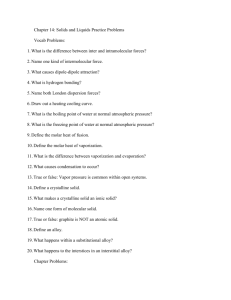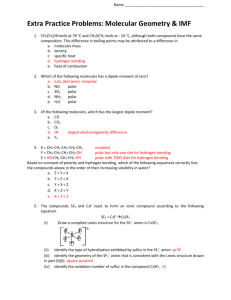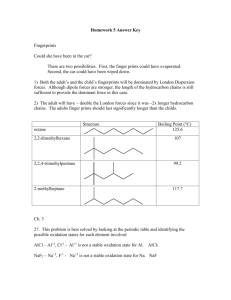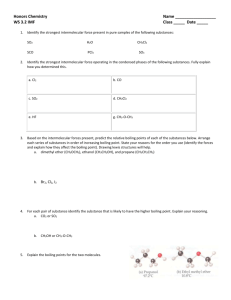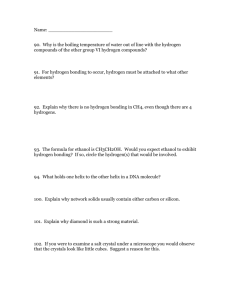File
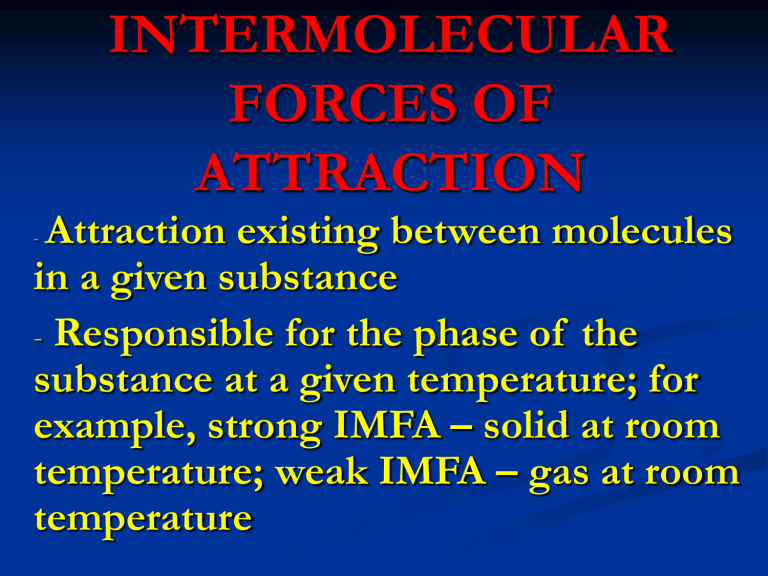
INTERMOLECULAR
FORCES OF
ATTRACTION
-
Attraction existing between molecules in a given substance
-
Responsible for the phase of the substance at a given temperature; for example, strong IMFA – solid at room temperature; weak IMFA – gas at room temperature
COMPARISON OF MOLECULAR
MASS, BOILING POINT
SUBSTANCE MOLECULAR
WEIGHT (amu)
BOILING
POINT (K)
PROPANE CH
3
CH
2
CH
3
44 231
DIMETHYL ETHER
CH
3
OCH
3
METHYL CHLORIDE
CH
3
Cl
ACETALDEHYDE
CH
3
CHO
ACETONITRILE CH
3
CN
46
50
44
41
248
249
294
355
TYPES OF IMFA
(weakest to strongest)
1. VAN DER WAAL’S FORCES a. London dispersion force
– caused by the movement of the electrons around the nucleus
- effect is very temporary
- present in all substances and only force present in non-polar molecules
LONDON DISPERSION FORCE
Induced dipole – temporary charges due to presence of electrons from neighboring atoms
BOILING POINTS OF HALOGENS substance Boiling point ( o C)
F
2
Cl
2
Br
2
I
2
-188
-35
60
185
The higher the number of electrons, the stronger is the London dispersion force.
SHAPE OF THE MOLECULE
AFFECTS BOILING POINT
b. dipole-dipole interaction
– present only in polar covalent molecules
- caused by the dipole moment
(differences in the electronegativy of the elements present)
Ethanol is Polar
c. Hydrogen bonding
present in polar covalent compounds where hydrogen is directly attached to F luorine,
O xygen and N itrogen ( the three most electronegative elements)
F O N
Hydrogen bonding only occurs if H is attached to F , O and N .
Hydrogen bonding in water
H bonding in ice
-
-
2. IONIC BONDING – present only in ionic compounds.
Electrostatic force of attraction.
An ionic compound dissolved in water.
FORMULA TO DETERMINE THE
NUMBER OF RINGS AND/OR
DOUBLE AND TRIPLE BONDS
ρ =
2 + 2C + N – H – X
2 where
C = number of carbon atoms
N = number of nitrogen atoms
H = number of hydrogen atoms
X = number of halogen (Group 17) atoms

